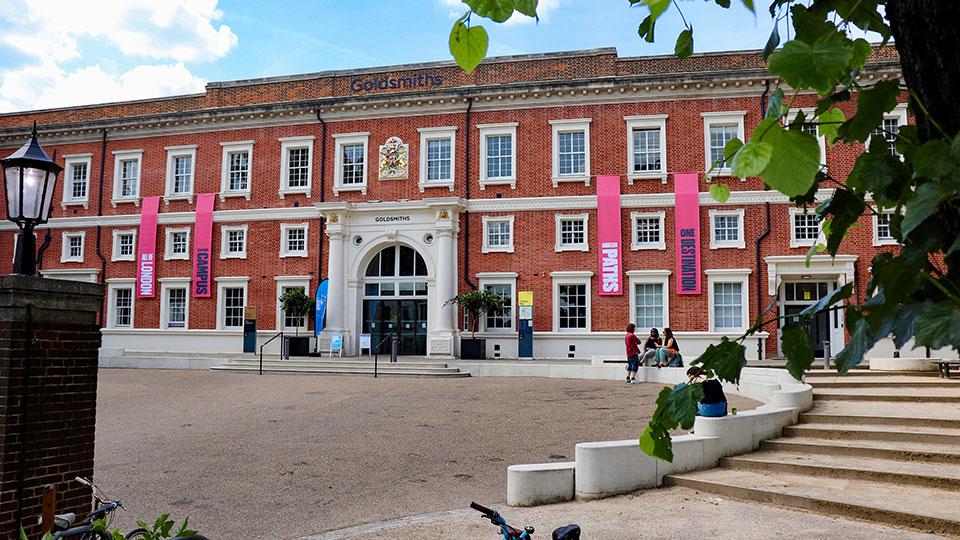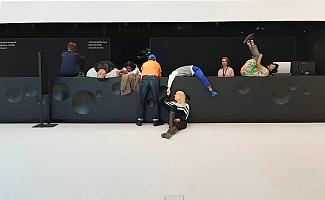BA (Hons)
History of Art
Content navigation menu
Why study BA History of Art at Goldsmiths
Investigate modern and contemporary art, art theory and visual culture from around the world, and from a fresh perspective.
- This degree encourages you to develop an independent critical involvement with works of art and visual culture. You'll examine changing historical conceptions of art and the artist, and explore the visual arts in their wider cultural and political contexts.
- We'll explore visual culture in all forms to broaden your outlook. You’ll not only examine the kinds of artefacts you might see in museums and art galleries, but also those that make up our everyday environment: like architecture, city and landscapes, adverts, TV and film, websites, the body, and street style.
- You'll study history of art from a fresh perspective, investigating key areas of debate rather than traditional chronology.
- You’ll study in one of the world's best universities for art and design (QS World University Rankings by Subject 2023) and you'll be based in London, which means you'll be able to take advantage of the many galleries, art spaces, museums, cultural facilities and specialist libraries the city has to offer.
- You’ll get the chance to put theory into practice with a work placement module, where you could gain experience at a public institution such as Hackney Museum or the Live Art Development Agency.
- Many of our recent graduates are now working as curators and exhibition managers with employers including Tate Modern, the V&A Museum and Edinburgh Castle, while others enter creative fields such as journalism and marketing.
Contact the department
If you have specific questions about the degree, contact Dr Yaiza Hernández Velázquez.
UCAS code
V350
Entry requirements
A-level: BBB
BTEC: DDM
IB: 33 points overall with Three HL subjects at 655
Length
3 years full-time, 4-6 years part-time
Fees
Home - full-time: £9250
Home - part-time: £4625
International - full-time: £20160
Department
What you'll study
Year 1 (credit level 4)
In your first year you'll examine changing conceptions of art and the artist, historically and also in terms of context, ideas, and kinds of practice.
You will also be introduced to history of art as a discipline and will engage in discussion of key aspects of contemporary visual culture.
Each of our first-year modules is taught by a team of four or five different teachers from the permanent faculty. Our approach to learning, teaching and research is exploratory, innovative and rigorous. In this way, first-year students soon get to know many of the department’s core academic staff.
Compulsory modules
You'll take the following compulsory modules:
| Module title | Credits |
|---|---|
| Modernities | 30 credits |
| Seeing and Showing | 30 credits |
| Space and Time | 30 credits |
| Beyond Boundaries | 30 credits |
Note about optional modules (if available): The above is indicative of the typical modules offered, but is not intended to be construed or relied on as a definitive list of what might be available in any given year. The module content and availability is subject to change.
Teaching style
This programme is taught through scheduled learning – for example, through a mixture of lectures and seminars. You’ll also be expected to undertake a significant amount of independent study. This includes carrying out required and additional reading, preparing topics for discussion, and producing essays or project work.
How you'll be assessed
You’ll be assessed by coursework only. Normally this consists of essays, sometimes accompanied by creative projects, group projects, multi-media projects, presentations, symposia, reviews, and studio work.
Credits and levels of learning
An undergraduate honours degree is made up of 360 credits – 120 at Level 4, 120 at Level 5 and 120 at Level 6. If you are a full-time student, you will usually take Level 4 modules in the first year, Level 5 in the second, and Level 6 modules in your final year.
Placement opportunity
The Year 3 module, 'Visual Cultures as Public Practice', offers all students a research opportunity within a public organisation.
The placement partner organisations are often institutions that have a collection or archive relevant to visual cultures, although you're also free to think creatively about other organisations that may provide interesting research opportunities.
During the placement you'll engage with practices and material outside of the university context, and you'll develop a research project that probes, challenges, complements and experiments with a variety of ideas.
You'll also develop a personal portfolio based on your experience. This is your opportunity to explore how what you've studied at university relates to the practices of the placement organisation.
The final presentation of your research project could lead to a small exhibition, a talk, a text, a performance, a performative lecture, or any other appropriate form. This presentation could take place within the public organisation, at Goldsmiths, or another place of your choice (in agreement with the host organisation).
Students have previously been able to carry out placements at the V&A, Live Art Development Agency, Iniva, Hackney Museum, and London Zoo.
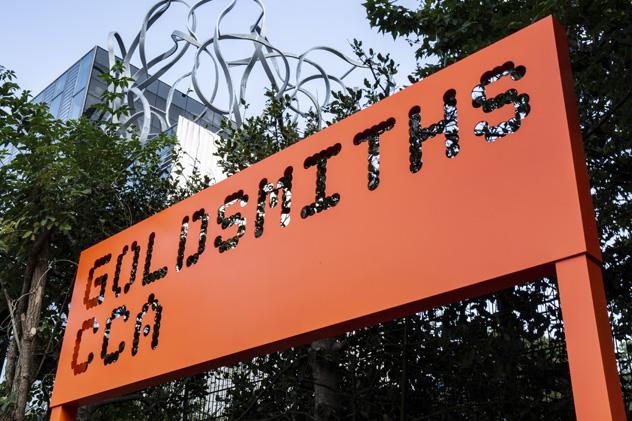
Goldsmiths has its very own public art gallery on campus, where you can experience world-class exhibitions by international artists.
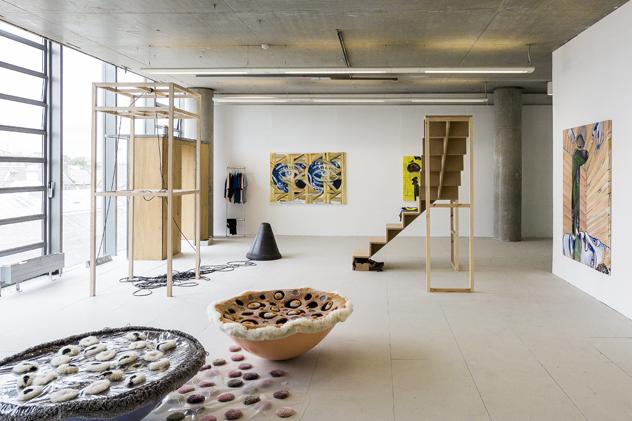
The annual Goldsmiths Degree Shows attract industry interest and are an inspiring celebration of student creativity.
Careers
The BA History of Art degree will prepare you for life after university, ensuring you graduate with the ability and confidence to forge a successful career. Graduates are well placed to pursue careers in:
- Museums and galleries – for example as administrators or curators
- The art world – for example as artists, art historians or theoreticians
- Journalism and the media
- Teaching and research
- The commercial world
Indeed, many of our alumni are active in the contemporary art world, whether working for major art and cultural institutions, or having set up cultural initiatives of their own.
Other graduates choose to continue their studies to Masters level and beyond.
Alongside our lecture and seminar programmes, we run events and workshops specifically aimed to help students prepare for their future directions.
You can read more about the career options open to you on our dedicated Visual Cultures careers page.
Skills
Some of the skills you'll develop during the BA History of Art degree include:
- Critical and analytical skills, especially relating to modern and contemporary art, ideas and visual culture
- Creative thinking
- An ability to question existing ideas and concepts
- An understanding of the historical emergence and development of contemporary artistic practices
- An understanding of the institutions of exhibition and criticism that shape art practices
- An understanding of the ways that art practices produce and reflect on the formation of cultural identities
- An awareness of the role of art practices in shaping subjectivity, signification, cultural difference and participation
- Research and evaluation skills
- Communication skills, including the ability to express your ideas clearly verbally and in writing
- A commitment to ethical and sustainable ways of living and working, to social justice and racial equity
- Flexibility and self-motivation
What our students say
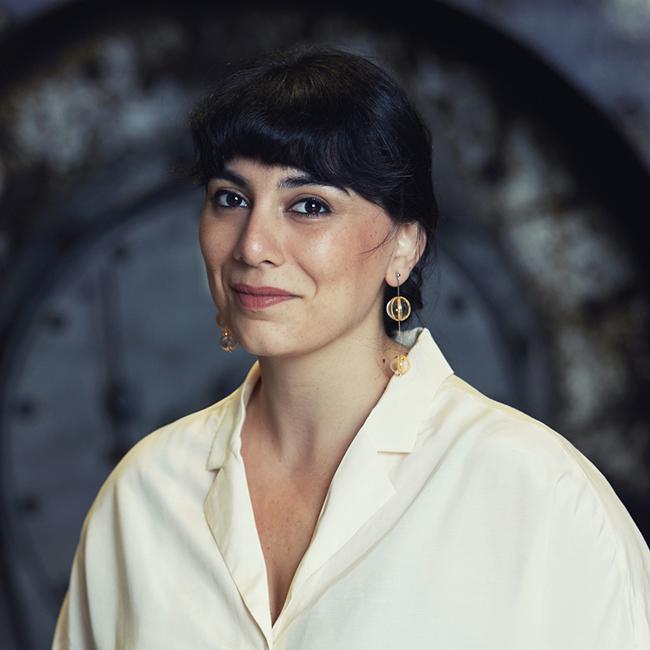
Entry requirements
A-level: BBB
BTEC: DDM
International Baccalaureate: 33 points overall with Three HL subjects at 655
UAL Extended Diploma: Merit overall
Access: Pass with 45 Level 3 credits including 30 Distinctions and a number of merits/passes in subject-specific modules
Scottish qualifications: BBBBC (Higher) or BBC (Advanced Higher)
European Baccalaureate: 75%, you also need to show an interest in and aptitude for Art History
Irish Leaving Certificate: H2 H2 H2 H2
Alternative qualifications and experience
See our full list of undergraduate entry qualifications.
We welcome students with a range of educational experiences. If you believe you may not meet the standard qualification requirements we would still encourage you to apply because we consider all aspects of your application when making a decision.
We’ll pay particularly careful attention to your personal statement, which is your opportunity to demonstrate your interest in the subject you’ve applied for. Your referees are also welcome to include any relevant contextual comments around your academic achievements. We’ll look at all these things when making a decision on your application, as well as your qualifications and grades, and may still be able to offer you a place.
International qualifications
We also accept a wide range of international qualifications. Find out more about the qualifications we accept from around the world.
If English isn’t your first language, you will need an IELTS score (or equivalent English language qualification) of 6.0 with a 6.0 in writing and no element lower than 5.5 to study this programme. If you need assistance with your English language, we offer a range of courses that can help prepare you for degree-level study.
Fees and funding
Annual tuition fees
These are the UG fees for students starting their programme in the 2024/2025 academic year.
- Home - full-time: £9250
- Home - part-time: £4625
- International - full-time: £20160
If your fees are not listed here, please check our undergraduate fees guidance or contact the Fees Office, who can also advise you about how to pay your fees.
It’s not currently possible for international students to study part-time if you require a Student Visa, however this is currently being reviewed and will be confirmed in the new year. Please read our visa guidance in the interim for more information. If you think you might be eligible to study part-time while being on another visa type, please contact our Admissions Team for more information.
If you are looking to pay your fees please see our guide to making a payment.
Funding opportunities
We offer a wide range of scholarships and bursaries, and our Careers Service can also offer advice on finding work during your studies. Find out more about funding your studies with us.
Additional costs
In addition to your tuition fees, you'll be responsible for any additional costs associated with your course, such as buying stationery and paying for photocopying. You can find out more about what you need to budget for on our study costs page.
There may also be specific additional costs associated with your programme. This can include things like paying for field trips or specialist materials for your assignments. Please check the programme specification for more information.

